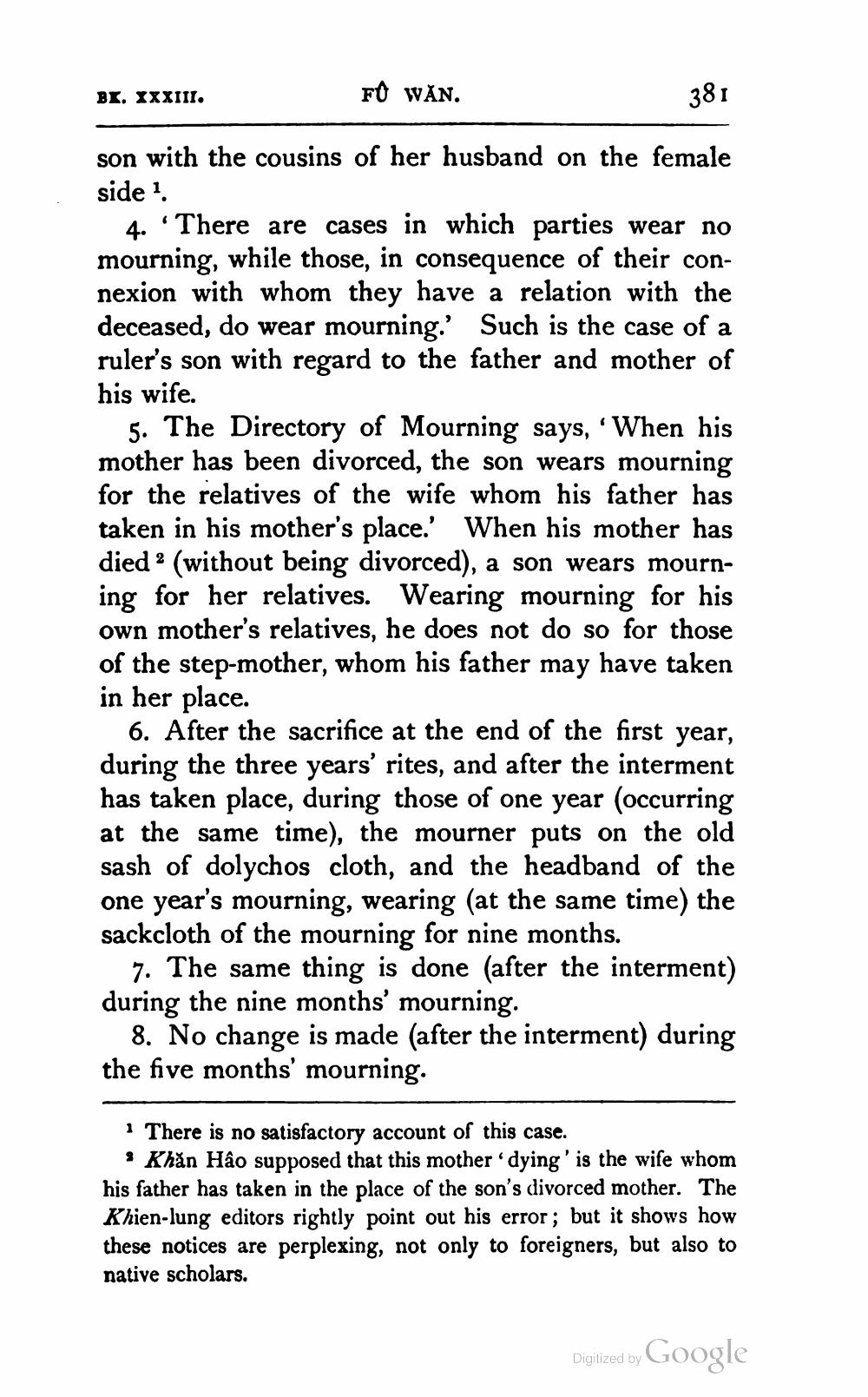________________
BE. XXXIII.
FU WĂN.
381
son with the cousins of her husband on the female side 1
4. There are cases in which parties wear no mourning, while those, in consequence of their connexion with whom they have a relation with the deceased, do wear mourning. Such is the case of a ruler's son with regard to the father and mother of his wife.
5. The Directory of Mourning says, 'When his mother has been divorced, the son wears mourning for the relatives of the wife whom his father has taken in his mother's place.' When his mother has died ? (without being divorced), a son wears mourning for her relatives. Wearing mourning for his own mother's relatives, he does not do so for those of the step-mother, whom his father may have taken in her place.
6. After the sacrifice at the end of the first year, during the three years' rites, and after the interment has taken place, during those of one year (occurring at the same time), the mourner puts on the old sash of dolychos cloth, and the headband of the one year's mourning, wearing (at the same time) the sackcloth of the mourning for nine months.
7. The same thing is done (after the interment) during the nine months' mourning.
8. No change is made (after the interment) during the five months' mourning.
There is no satisfactory account of this case. • Khăn Hảo supposed that this mother 'dying' is the wife whom his father has taken in the place of the son's divorced mother. The Khien-lung editors rightly point out his error; but it shows how these notices are perplexing, not only to foreigners, but also to native scholars.
Digitized by Google




